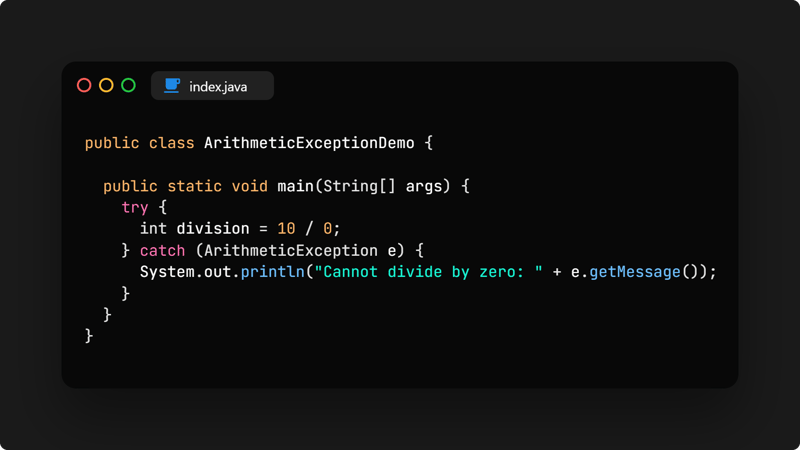Understanding Java Exceptions: A Guide with Practical Examples

Oludayo Adeoye
Posted on April 18, 2024

Java, one of the most widely used programming languages, is renowned for its robust exception handling mechanism. Exception handling is a critical concept in Java that allows a programmer to handle runtime errors, thus ensuring the smooth execution of the application.
What is an Exception in Java?
An exception is an event that disrupts the normal flow of the program. It is an object which is thrown at runtime and may be caught by catch blocks. If not properly handled, it can cause your program to terminate abruptly.
Types of Exceptions
There are two main categories of exceptions in Java:
- Checked Exceptions: These are exceptions that are checked at compile-time. It’s mandatory for a programmer to handle these exceptions. For example, IOException, ClassNotFoundException, etc.
- Unchecked Exceptions: These are exceptions that are not checked at compile-time. They occur mainly due to programming errors, such as NullPointerException, ArrayIndexOutOfBoundsException, etc.
Exception Handling Mechanism
The core of Java’s exception handling lies in three keywords: try, catch, and finally.
-
try: The block of code that might throw an exception. -
catch: The block of code that handles the exception. -
finally: A block that gets executed whether or not an exception has occurred.
Code Snippets and Examples
Let’s look at some examples to understand how to handle exceptions in Java.
Example 1: Handling ArithmeticException

In this example, dividing by zero would cause an ArithmeticException. The catch block catches the exception and prints an error message.
Example 2: Handling NullPointerException

Attempting to call a method on a null reference throws a NullPointerException, which is then caught and handled.
Best Practices
When working with exceptions, it’s important to follow best practices:
- Catch specific exceptions instead of a generic exception.
- Avoid empty catch blocks.
- Use finally blocks for cleanup code.
- Throw exceptions with meaningful messages.
Conclusion
Exception handling in Java is a powerful mechanism that not only helps in dealing with runtime errors but also improves the reliability of the application. By understanding and implementing proper exception handling, developers can ensure that their Java applications are robust and fault-tolerant.

Posted on April 18, 2024
Join Our Newsletter. No Spam, Only the good stuff.
Sign up to receive the latest update from our blog.


